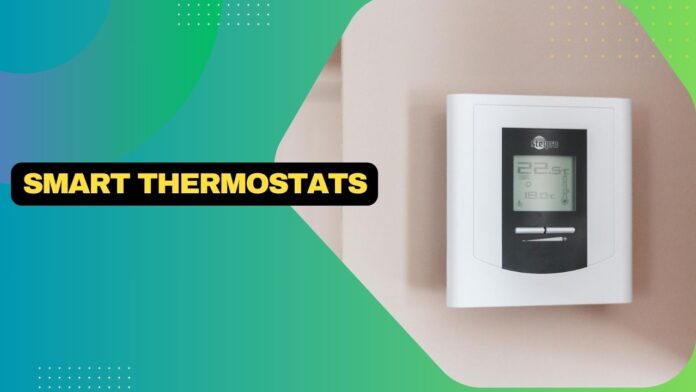There’s an undeniable appeal to upgrading your home’s thermostat to a smarter, more efficient device that can keep you comfortable and save you money on your energy bills. But have you delved into the world of smart thermostats? When it comes to harnessing the power of these nifty gadgets, you definitely want to make sure you’re maximizing both energy efficiency and comfort. In this blog post, we’ll explore the benefits and features of smart thermostats, along with practical tips for integrating them into your home energy management plan.
Understanding the Core Benefits of Smart Thermostats
Before diving into specific features, it’s essential to know the core benefits of smart thermostats for energy efficiency and comfort. These benefits include automatic and programmable temperature adjustments, remote control and monitoring, real-time energy usage data, smart home integration and support, and learning and adapting to your preferences and habits.
Impact on the power grid
An important aspect to consider is how smart thermostats can positively impact the overall power grid. By efficiently managing energy consumption, smart thermostats reduce the stress on the grid during peak hours, which can enhance its stability and prevent outages. Familiarizing yourself with how the power grid operates can help you better understand the significance of smart thermostats in contributing to a more reliable and greener energy system.
Remote Control and Monitoring Capabilities
Have you ever left the house and realized the heater or air conditioner was accidentally left on full blast? With a smart thermostat, you can use smartphone apps or web interfaces to control and monitor the temperature of your home remotely. This not only helps you save energy but also provides an added layer of convenience and comfort in managing your home’s temperature.
Maximizing Efficiency Through Automation
A key feature of smart thermostats is their ability to automatically adjust the temperature based on various factors. One of the most common examples is learning algorithms that detect patterns in your household’s daily activities. By adjusting the temperature when no one is home or when everyone is sleeping, you’ll consume less energy and save money on your utility bills. Additionally, by using geofencing technology, a smart thermostat can synchronize with your smartphone to know when you’re nearing home, and adjust the temperature accordingly for your comfort upon arrival.
Utilizing Real-Time Energy Usage Data
Smart thermostats offer real-time energy usage data, providing valuable insights into how and when your home consumes the most energy. By understanding your household’s energy consumption patterns, you can make informed decisions on how to adjust the thermostat for maximum energy savings without sacrificing comfort.
Smart Home Integration and Support
Most smart thermostats integrate seamlessly into your existing smart home ecosystem, allowing you to control settings by using popular voice-controlled assistants such as Amazon’s Alexa or Google Assistant. This convenience not only saves time and effort but also helps you manage your energy consumption more effectively.
Personalization: Learning and Adapting
One of the most powerful features of smart thermostats is their ability to learn and adapt to your preferences and habits. As you use them over time, they’ll become more attuned to your routine and start making temperature adjustments according to your preferences. This not only leads to increased comfort but also helps save energy by minimizing the need for manual input.
Reducing Your Environmental Impact
By using a smart thermostat to optimize your energy usage, you’ll not only save money but also reduce your environmental impact. Lower energy consumption means a decreased demand for power plants and thus lower greenhouse gas emissions. Choosing a smart thermostat is a simple yet effective way to contribute to environmental sustainability, making it a win-win for both your wallet and the planet.
Utility Rebate and Incentive Programs
When adopting a smart thermostat, don’t forget to check with your utility company for available rebates or incentives. Many utilities offer programs that help offset the initial cost of these devices, making them even more financially accessible. By taking advantage of these opportunities, you can start enjoying the benefits of a smart thermostat sooner and further optimize your energy savings.
Choosing the Right Smart Thermostat for Your Home
There are several smart thermostat models available on the market, each with its unique features and benefits. Before selecting a smart thermostat, consider factors such as compatibility with your HVAC system, existing smart home platforms, and your specific energy efficiency goals. Researching and comparing different models will help you find the ideal thermostat for your home and maximize the benefits of this energy-saving technology.
Practical Tips for Integrating a Smart Thermostat
Ready to unlock the power of a smart thermostat? Here are some practical tips for integrating it into your home energy management plan:
- Choose a smart thermostat that’s compatible with your current heating and cooling system
- Optimize its placement to ensure accurate temperature readings
- Make sure your Wi-Fi network is strong enough to support the thermostat
- Experiment with different temperature settings and schedules to find the perfect balance between comfort and energy savings
- Regularly review energy usage data and make adjustments as needed
Final Thoughts
Smart thermostats offer a variety of features and benefits to help you maximize energy efficiency and comfort in your home. By leveraging automation, remote control capabilities, real-time data, and integration with your smart home ecosystem, you can effectively manage your home’s temperature while saving money on your energy bills. Keep these practical tips in mind as you embark on the journey of unlocking the full potential of your smart thermostat, and enjoy the newfound convenience and control over your home’s climate.















